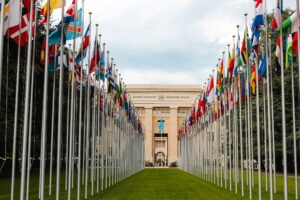
A couple of weeks ago, the UK’s Minister for International Development, Andrew Mitchell, presented the first new White Paper on International Development for almost fifteen years to Parliament. Its release has prompted much comment: measured praise from some quarters, measured scepticism from others. My own opinion leans towards measured praise. But so far, none of the reactions to the White Paper have offered a satisfactory account of what it exists for at all. In what follows I don’t attempt to assess the content of the White Paper, or rate its ambition, but rather to point out that its primary practical value—specifically, its value in influencing internal policy debates within the UK government—has so far been overlooked, and may be meaningful.
In the UK system, white papers can serve two purposes: they may set out the direction and intention of government policy, or they may introduce proposals for future legislation. Since this White Paper signals no legislative intent (and does not commit the government to additional spending), it functions purely to signal policy intent.
Yet it’s hard to think of a less promising time for a government to signal a long term shift in its policy on international development. A general election is approaching; it could take place as soon as 6 months, and no later than a just over a year from now. All the polls suggest that the election, whenever held, will result in a change of government; with all that the exact majority achieved the only thing that remains to be contested. This is not to say that the current government should attempt nothing as challenging elections loom, but launching a long-term vision at such a juncture is at the least, a little unusual. What’s more, two days after the White Paper was published, the autumn budget confirmed that the aid budget would not return to its previous benchmark of 0.7 percent of Gross National Income in the immediate future. And the Foreign, Commonwealth and Development Office, which wrote the White Paper, is only just emerging from a nightmarish few years in which its development functions were scattered, its programming decimated, and its expertise severely drained. In short, it seems as though the White Paperhas a limited shelf life, and the financial and organizational capacity to achieve the White Paper’s aims is severely limited.
In this context, the choice to devote several hundred hours of civil servant time and much attention from the Minister and Foreign Secretary—not to mention the many stakeholders who provided evidence and expertise to the drafting team—was not exactly brave (in the Sir Humphrey meaning of the phrase), but perplexing. The White Paper makes a number of clear policy statements. It expresses a desire to refocus UK development resources on poverty; emphasises the need for true partnerships with both developing countries and other donors; and signals increased use of British International Investment (the UK’s development finance institution) in poorer and more fragile places; as well as a return to the high standards of transparency the Department For International Development (DFID) once met.
